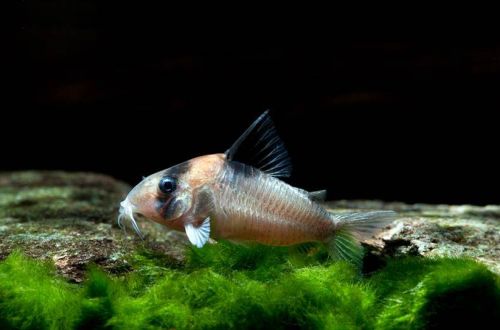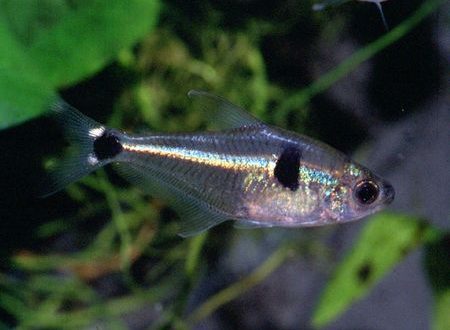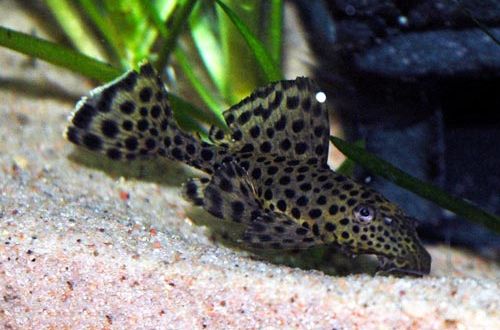
Burgess corridor
Corydoras Burgess or Cory Burgess catfish, scientific name Corydoras burgessi, belongs to the family Callichthyidae (Callichthy catfishes). Named after biologist Warren Burgess, author of the Atlas of Marine Aquarium Fishes, a book describing the popular aquarium fish.

Native to South America. It is considered endemic to the upper basin of the Rio Negro in the northwest of the Brazilian state of Amazonas. A typical biotope is represented by streams and rivers, the water in which is colored in a rich brown color due to the high concentration of tannins formed as a result of the decomposition of plant organic matter. Such an environment has very low values of the main hydrochemical parameters.
Contents
Description
It is a close relative of Corydoras Adolphus, having a similar coloration and body pattern. Adults reach a length of about 5 cm. The main color is light with pinkish hues. The black marking on the upper part is limited to the space from the head to the dorsal fin. A diagonal dark stroke passes through the eye. A yellow or orange spot is noticeable at the top of the head.
Brief information:
- The volume of the aquarium – from 70 liters.
- Temperature – 20-28°C
- Value pH — 5.0–7.0
- Water hardness – soft (1-10 dGH)
- Substrate type – sand or gravel
- Lighting – moderate or bright
- Brackish water – no
- Water movement – light or moderate
- The size of the fish is about 5 cm.
- Food – any sinking food
- Temperament – peaceful
- Keeping in a group of 4-6 fish
Maintenance and care
Relatively easy to keep if kept in a suitable aquatic environment, fed a balanced diet and not attacked by other fish. Failure to comply with one of these conditions can lead to health problems in Cori catfish.
Burgess Corydoras prefers to be in a group of 4-6 individuals. For this small flock, you will need a tank with a volume of 70 liters or more. The main emphasis in the design is given to the lower tier. It is recommended to use a soft sandy substrate and a few natural driftwood as shelters. Live aquatic plants are optional but welcome. An additional element of decor will be the dried leaves of some trees, which are pre-soaked and laid on the bottom. Sheet litter not only gives more natural design, but also serves as a means of giving water a chemical composition characteristic of natural reservoirs. Read more in the article “Which tree leaves can be used in an aquarium.”
In the process of water treatment and subsequent maintenance of the aquarium, it is necessary to ensure very mild, slightly acidic pH and dGH values. A productive filtration system and regular maintenance procedures (replacement of part of the water, waste disposal) will prevent excessive accumulation of pollution.
Food. An omnivorous species, it will accept live, frozen and dry food popular in the aquarium hobby. It is advisable to use a variety of sinking products. The latter becomes relevant in view of the bottom lifestyle of catfish.
behavior and compatibility. They can live alone, in pairs, and in a group. The latter option is considered preferable. Usually, different species of Kori do not form mixed flocks when they are together, but if closely related species, such as Corydoras Adolphus, are introduced, this rule is violated. Compatible with other non-aggressive fish of comparable size that can live in similar conditions. For example, Apistograms, which are constant companions of catfish in their natural habitat, will be a good choice.




